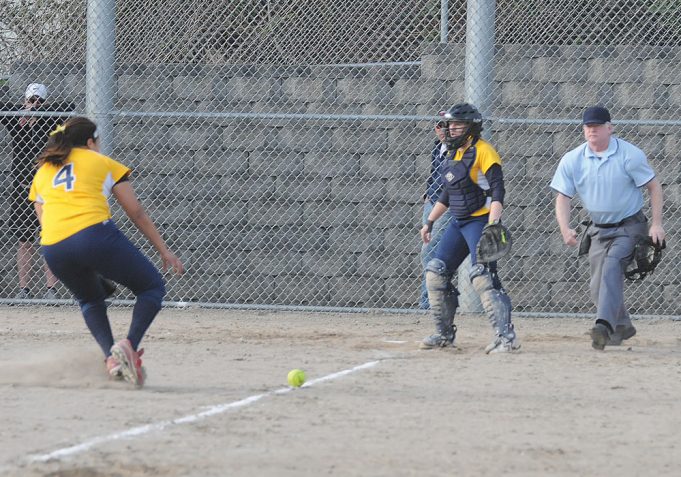Am I a good umpire?”
Umpires should ask themselves that question (and answer it honestly) every so often. I like to think my long umpiring career has been successful. However, whether you are a good umpire often depends on whom you ask.
Over the years I’ve concluded a good umpire is a no-nonsense umpire who maintains a safe environment, keeps the game fair and recognizes and rules on tough calls without unnecessarily inflicting himself or herself on the game with phantom, highly technical or unneeded calls.
In no particular order here are some amusing and some interesting comments, critiques and criticisms I’ve received about my umpiring:
Situation No. 1.
I had worked the plate in the first game of a college doubleheader. The game was a well-played pitchers’ duel with no problems and only one walk. Between games, my aloof, condescending partner curtly offered, “I noticed you didn’t follow the batter-runner down to first base after a base on balls.” I answered, “No, I didn’t.” My partner continued, “Well, ‘they’ like you always to trail the batter-runner to first base.”
Opinion No. 1.
If an umpire wants to follow the batter-runner to first on a walk, that’s fine. I try to see everything that occurs on the field in live-ball, dead-ball and award situations. I will observe the play, but I’m not going to draw attention to myself with false hustle by needlessly trailing a batter-runner who has walked to first base when no possible play is apparent. If my failure to do so makes me a bad umpire, then I’m a bad umpire.
And which of the many possible “theys” to whom he was referring was never revealed.
Sequel No. 1.
With me on the bases in the second game, R3 occupied third base for team A with one out in the sixth inning. B4 hit a ground ball to F3 near the first-base line. B4 veered to her left to avoid F3, but seeing a chance to retire R3 at the plate, F3 fired toward home plate.
However, the off-line throw inadvertently struck B4 about 25 feet from first base in fair territory. My plate umpire bellowed, “Dead ball! Dead ball! That’s three-foot-lane interference! The batter-runner was running out of the lane!” He declared B4 out and we had to return R3 to third base. What followed was one of the worst arguments in any game I ever officiated.
After the game in the parking lot my partner lamented endlessly about how the team at bat could argue his “great” three-foot-lane interference call. Finally, I could stand it no more. I calmly said, “That wasn’t three-foot-lane interference.” “What do you mean?” he shouted while gesturing wildly. I quietly said, “Three-foot-lane interference can only occur on a throw going to first base.”
Furiously, he thumbed through his rulebook and then fell silent when he read the college rule (all other codes agree) that stated three-foot-lane interference can occur only when there is interference with the fielder taking the throw at first base.
After some thought, he groped by saying, “Well, B4 interfered with the throw.” I asked, “Did you think B4 intentionally interfered with the throw?” When he said, “No,” I answered, “Well, there can’t be interference with a thrown ball in college unless the runner intentionally interferes with the throw.”
After another examination of the rulebook, he reluctantly agreed. I did not feel angry that he had criticized me for not trailing the batter-runner to first base on a walk, but I was disappointed that with his superior attitude, he did not know the three-foot-lane rule or the interference with a thrown ball rule.
Situation No. 2.
I was working the plate in a college semifinal tournament game with a 1-1 score in the top of the sixth inning. Team B had a runner on second with one out when B3 grounded to short. When F6 threw to first, R2 from second broke for third. Reading the play correctly, I moved down the third-base line in foul territory and then hooked fair as F3’s throw streaked across the diamond. On a close, difficult call I ruled R2 out and sold the call with an overhand out. No one argued.
With the half-inning over, I walked along the dead-ball line as I returned to the plate area. I then noticed the tournament umpire-in-chief motioning frantically at me. With no idea what was wrong I met her near the backstop. The umpire-in-chief admonishingly said, “I told the tournament director that between innings the umpires would line up on the foul line facing the infield, so please assume that position.”
Opinion No. 2.
I was astounded, shocked and angry simultaneously. I thought, “I had just made and sold the biggest call of the game and I was being chastised for not immediately and dutifully taking the mandated position on the foul line near home plate.” That game was played more than 25 years ago and I still can’t believe the umpire-in-chief’s “please assume that position” comment.
Situation No. 3.
Later in the same game as Situation No. 2, the same umpire-in-chief informed me I was standing too close to home plate between innings. When I asked how far off my position was she said, “About three feet.”
Opinion No. 3.
I wondered what was in the umpire-in-chief’s mind unless she was completely intimidated by the demanding tournament director, or so mired in technicalities she lost sight of “realistic officiating.”
Do you think my being three feet out of my between-innings position made me a bad umpire?
What's Your Call? Leave a Comment:
Note: This article is archival in nature. Rules, interpretations, mechanics, philosophies and other information may or may not be correct for the current year.
This article is the copyright of ©Referee Enterprises, Inc., and may not be republished in whole or in part online, in print or in any capacity without expressed written permission from Referee. The article is made available for educational use by individuals.



















